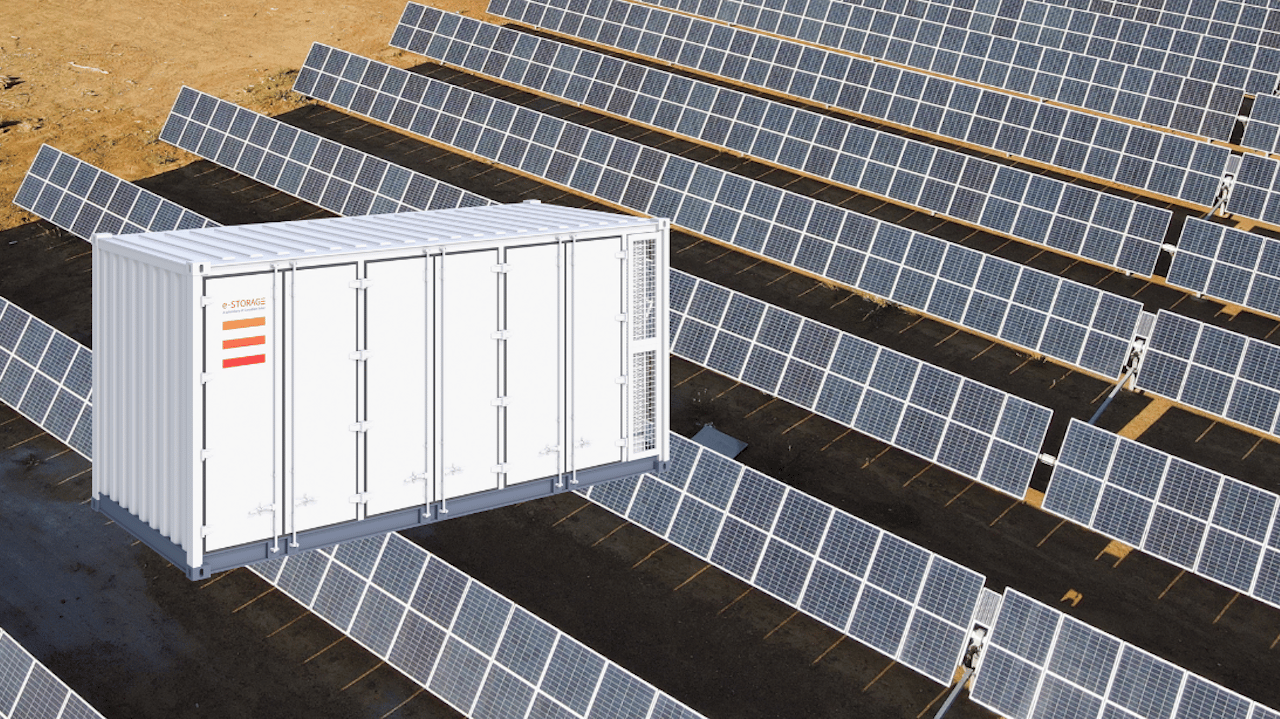- Climate Tech Canada
- Posts
- Battery build-out
Battery build-out
What Canada's largest battery storage project signals for the market
Hello climate builders,
We’re in Vancouver this week for Converge where we’re diving into all things industrial climate tech. We’ll be sitting down with founders working on carbon capture, critical minerals, energy storage and more to talk about the scale up journey and building partnerships with industry.
If you’re in the Vancouver area, we’re also co-hosting a meetup on Wednesday morning with ClimateDoor - we’re nearing capacity, so RSVP now to join us and chat about all things climate over a coffee!
In today’s issue, we’re looking at Canada’s largest new battery energy storage and what’s driving growth in this market. We’ve also got:
More clean economy nation building projects
GoodLeaf scales up indoor farming
Elysis hits a milestone for producing aluminum with zero emissions
P.s. Enjoying the newsletter? Share it with someone in your network! And if you’re that someone, subscribe below.
MARKETS
Energy storage as core infrastructure

Credit: e-STORAGE
What happened: Canada’s biggest battery energy storage system (BESS) broke ground this week. It’s a uniquely Canadian project, with Potentia Renewables leading the build in partnership with the Algonquins of Pikwàkanagàn First Nation. Canadian Solar’s e-STORAGE division is delivering the system.
The project is part of Ontario’s big bet on battery storage through the LT-1 Reliability procurement. It’s expected to deliver 411 MW or 1.86 GWh of battery storage capacity to Ontario’s grid. Most LT1 projects include Indigenous equity stakes.
The context: This groundbreaking signals the start of a larger build-out of wind, solar, and storage. A CanREA market outlook projects 12–16 GW of new storage added in Canada by 2035 and between $143–205B in investment.
BESS fills a critical gap for the electricity system, charging when renewable energy is abundant and prices are low, and then discharging when demand increases.
The build-out is driven by rising industrial demand from electrification, EVs, new data centres, and avoiding emissions from adding gas capacity. Storage complements variable renewable energy while taking the pressure off of fights over nuclear and gas build outs.
Notably, storage contract prices in this procurement were well below those of gas-fired generation.
Why it matters: Projects like Skyview 2 are the first of a larger build out. Grids across Canada - and the world - need to add massive amounts of flexible capacity to integrate renewables, keep up with demand from electrification and data centres while maintaining reliability.
Energy storage is also a bright spot for energy companies like Canadian Solar, which saw battery storage deliveries outpace solar.
The bottom line: While installed capacity is still low (<1GW) Canada’s grid is increasingly treating storage as core infrastructure, not an edge case.
💬 We’re planning a deeper dive into storage soon - What questions or angles should we explore?
SPONSORED BY MINDSTREAM
Choose the Right AI Tools
With thousands of AI tools available, how do you know which ones are worth your money? Subscribe to Mindstream and get our expert guide comparing 40+ popular AI tools. Discover which free options rival paid versions and when upgrading is essential. Stop overspending on tools you don't need and find the perfect AI stack for your workflow.
CLIMATE CAPITAL
🌱 GoodLeaf Farms (Guelph, ON) secured $52 million in equity financing from Farm Credit Canada, Power Sustainable and McCain Foods for its vertical farming solution. GoodLeaf will expand it’s Alberta and Quebec farms and establish a new R&D centre in Ontario.
☀️ Swish Solar (Waterloo, ON) closed an oversubscribed US$1.5 million pre-seed round led by Friday Ventures for its self-cleaning solar panel technology.
⛏️ Vertogen Technologies and Rockburst Technology (Vancouver, BC) received $500K investments from NorthX to support pilot deployments for RNG production and carbon-negative mining.
IN THE FIELD
🏭️ Svante will test its industrial carbon capture technology with Sweden’s largest forest-owner association to validate capturing biogenic CO2 emissions from pulp operations.
🚚 Loblaw is running its first commercial pilot of hydrogen Class 8 trucks in B.C.
🚢 Templar Marine, a new zero-emission boating company, launched in Nova Scotia, aiming to start production next year.
⚡️ US-based heat pump maker Quilt launched in Canada this week, partnering with installers in five provinces.
💧 Quebec Innovative Materials confirmed they’ve found a natural underground hydrogen system in Nova Scotia.
♻️ Circular materials company Loop signed with Nike to source recycled polyester from textile waste, replacing the use of virgin, oil-based materials.
🌊 Eauclaire Tidal and Scotland’s Orbital Marine Power secured two new berths and power purchase agreements to produce tidal power off the shore of Nova Scotia.
🏭️ Elysis, a joint venture by Rio Tinto and Alcoa, succesfully tested its zero-emissions aluminum production system using an inert anode cell.
💧 Ballard cancelled its 3GW hydrogen fuel cell plant in Texas due to uncertainty around DOE funding and sufficient existing capacity.
⛽️ Convertus plans to build a new $165M biofuel facility in Ontario to convert 200,000 tonnes of organic waste into renewable natural gas and food-grade CO2.
Enjoying the newsletter? You probably know someone else who’d enjoy it too.
Share the link below to spread the word (and earn rewards!)
NEWS
📡 Signals & Currents
PM Carney referred another seven projects to the Major Projects Office for fast-tracked approvals. The list includes spans mining and processing of critical minerals, transmission lines, hydro, and LNG.
Beyond project permitting, the federal government is also looking to make more equity investments in critical mineral processing plants. [CBC & FP]
💬 Why it matters: The list of “nation building” projects is dominated by the clean economy - projects that unlock more low-carbon electricity and critical minerals for the energy transition. Only two projects are in fossil fuels, both of which bet on uncertain demand for natural gas.
Alberta allocated the final 230MW of grid capacity reserved for data centres to TransAlta’s natural gas-powered Keephills project. [The Logic]
Vehicle-to-grid integration is ready for wider adoption in Canada, but limited by fragmented policies and standards. [Electric Autonomy]
Canada joined the UK, Japan and others in efforts to create a market for low-methane natural gas. [FP]
China’s dominance in renewable energy is giving it an edge in AI compute. [Bloomberg]
COP30 continues this week with government ministers joining the talks. More than 100 items are on the table, including contentious negotiations on climate finance and the 1.5C target. [Carbon Brief]
Climate philanthropy hit a record $870M in 2024, jumping 120% [AgFunder]
Almost 2/3rds of Canada’s big emitters now disclose energy transition plans as companies quietly get to work. [G&M]
Global EV sales are up 23% this year, but demand is heavily clustered in China with 68% of sales. [Rho Motion]
COMMUNITY
🚀 Methane Reduction Demonstration Program: Hosted by NGIG to support methane reduction solutions through pilot demonstrations within energy company operations.
➡️ Discover more funding opportunities.
🗓️ National Building Decarbonization Forum: Exploring the most promising pathways to reducing emissions from the building sector, and to develop a plan of action. Ottawa, November 26-27th.
➡️ Discover more climate events.
🧑🏻💻 e-Zinc is hiring a Senior Chemist to advance its zinc electrode innovation.
➡️ Find more open roles.
What did you think of today's newsletter? |
Share Climate Tech Canada with your network and help us grow! Make 3 referrals to get a Shout-out in the newsletter. See all rewards here.

Reply